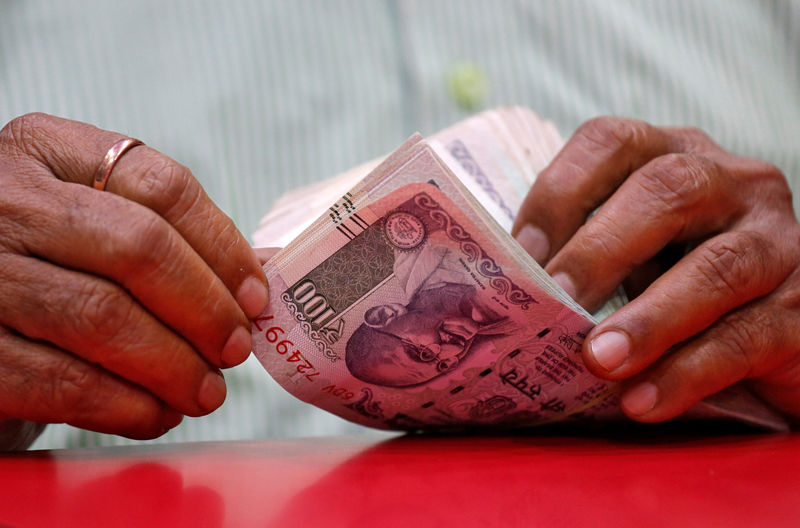By Milounee Purohit
BENGALURU (Reuters) – The Indian rupee will remain in a tight range and appreciate only slightly against the U.S. dollar over the coming year as the Reserve Bank of India continues to intervene in currency markets despite a strong economy, according to a Reuters poll.
The rupee has gained only 0.2% against the greenback since the beginning of the year as receding calls for an early rate cut by the U.S. Federal Reserve propped up the dollar.
The Indian currency was expected to strengthen slightly from Tuesday’s rate of 83.05 to the dollar to 83.00 in a month and 82.84 in three months, the Feb. 2-6 Reuters poll of 42 foreign exchange analysts found.
Although the rupee has outperformed all its major Asian peers so far this year, ultimately several such as the , Thai baht and Korean won are expected to gain more by end-January, 2025.
“Looking at near-term perspectives, the rupee should continue to trade in a tight range. I see a slight upward bias from here in ,” said Dhiraj Nim, forex strategist at ANZ.
“The rupee could depreciate modestly, but over the longer horizon…a supportive balance of payments and the eventual softening in the dollar would pave the way for modest appreciation.”
Fed policymakers have pushed back strongly against early interest rate cut bets, delaying a long-awaited turn in the dollar’s dominance over other currencies.[EUR/POLL]
The RBI is still widely expected to cut rates later this year, but at a much slower pace than the Fed, so relative rupee strength may linger.
Expectations that growth in Asia’s third-largest economy would remain the fastest among major economies may also provide further background support.
Still, any gains in are likely to be limited with the RBI expected to continue using foreign exchange reserves, currently around $616.7 billion, to safeguard against volatility.
The rupee was expected to gain more than 0.6% to 82.50 versus the dollar in six months and 0.8% to 82.40 in a year. Forecasts ranged between 79.00 and 84.50 for the 12 month horizon.
India has attracted significant inflows to its bond markets from foreign investors in recent months, helped by JPMorgan’s decision to add the debt to its indexes.
“Inclusion in JPMorgan’s GBI-EM index this year and lack of optimism on China suggest that portfolio flows into India should continue,” noted Aditya Sharma, emerging markets strategist at Natwest Markets, referring to the government bond index for emerging markets.
“Additionally, the RBI’s FX interventions are focused on suppressing volatility from broader USD moves.”
(For other stories from the February Reuters foreign exchange poll:)
Read the full article here












